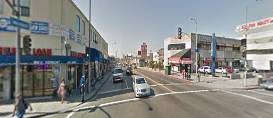.jpg) |
| Gorley's Lake Hotel (c. 1915-1930) |
Location: Uniontown, Pennsylvania, USA
Opened: April 1908
Closed: Hotel closed in July 1957, when sold to the Society of Brothers
 |
| Gorley's Hotel |
 |
| Gorley's Lake Hotel |
The hotel's 21 rooms, we're assured, were "handsomely furnished"--though only six of the 21 rooms had "private bath rooms":
White enameled iron beds, with coverings as white as snow. Mahogany is the material used in the furniture of each room. Hot and cold flowing water is provided in stationary wash stands. The carpets on the floor are of the finest quality of brussels, while the walls and ceilings of each room are finished in colors that match the floor coverings.
Sounds so romantic....
A History of Uniontown tells us that Charles H. Gorley built this four-story brick hotel in 1907: "He ran this as a restaurant from April 4, 1908, as Hotel Gorley for a short time, but failing to secure a hotel license, he closed the place."
The evidence is not altogether clear, but it appears that at some point the hotel was acquired by new owners and significantly expanded. A 1927 ad in the Jewish Criterion describes a much bigger and grander place than the Gorley Hotel from 1908--assuming this is the same place:
GORLEY'S LAKE HOTEL
75 Miles from Pitt:()urgh
Mountains Are Calling—Beautiful
and Picturesque—A Tonic for
the Tired Mind and Body
This popular summer resort offering you more pastime than any hotel on the National Highway. A resort hotel for discriminating guests. You are making no mistake in spending your vacation here. Hotel is New and Modern with 100 Rooms and Baths and Beach Bathing,
Boating, Dancing
11 Miles East of Uniontown, Pa.
Time Magazine actually reported on the closing of Gorley's Lake Hotel in July 1957, when it was sold to the Society of Brothers--what Time described as "an obscure religious sect." Presumably the ladies dining room was long gone by then:
It was a big night at Gorley's Lake Hotel. All four bars were going full blast, and some 500 revelers milled happily about the ivy-grown Allegheny Mountain resort near Uniontown, Pa. Some of them went in for a moonlight dip from the concrete bathing pavilion, and it was 4 a.m. before things quieted down; the management even set up a few drinks on the house all around—a flagrant violation of Pennsylvania liquor laws. But the 34-year-old hotel would not be needing its liquor license any more..






















JBPcvK6!ohw~~60_1.jpg)


.jpg)







